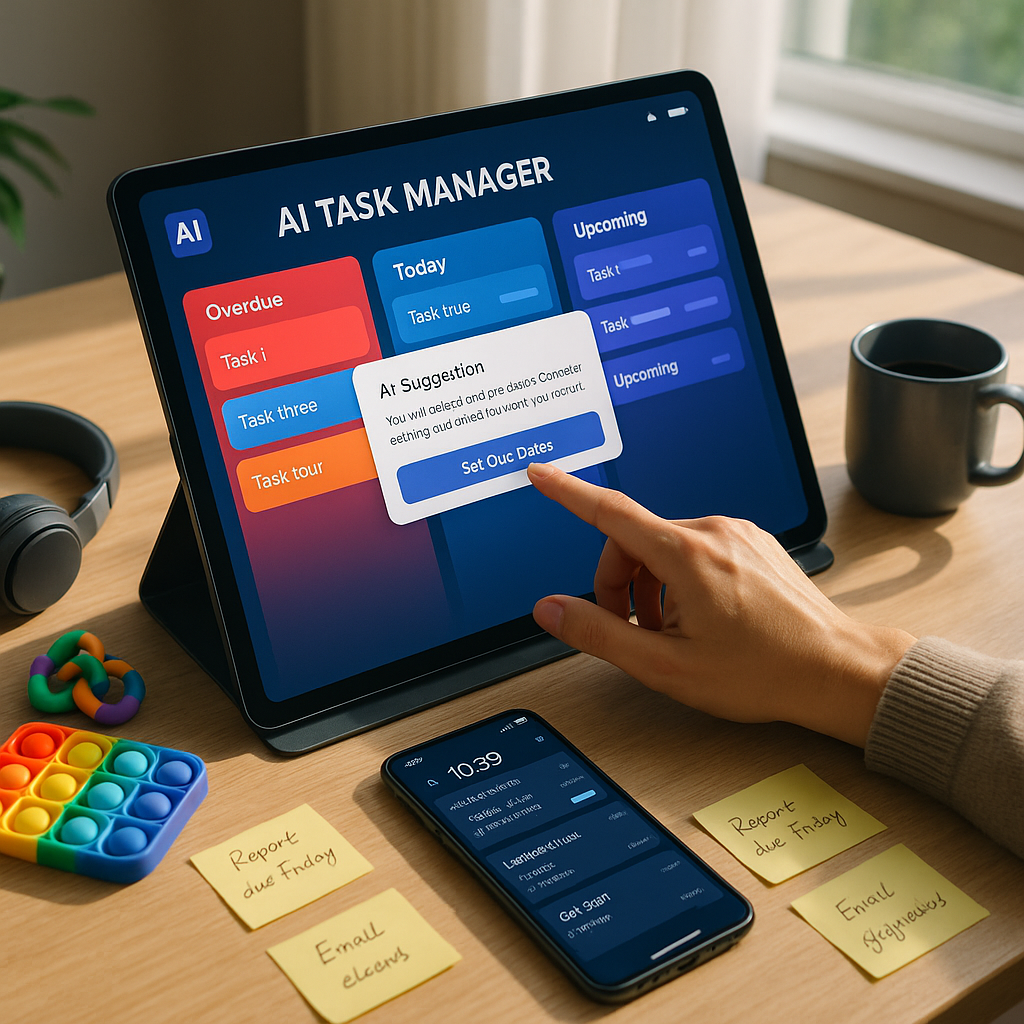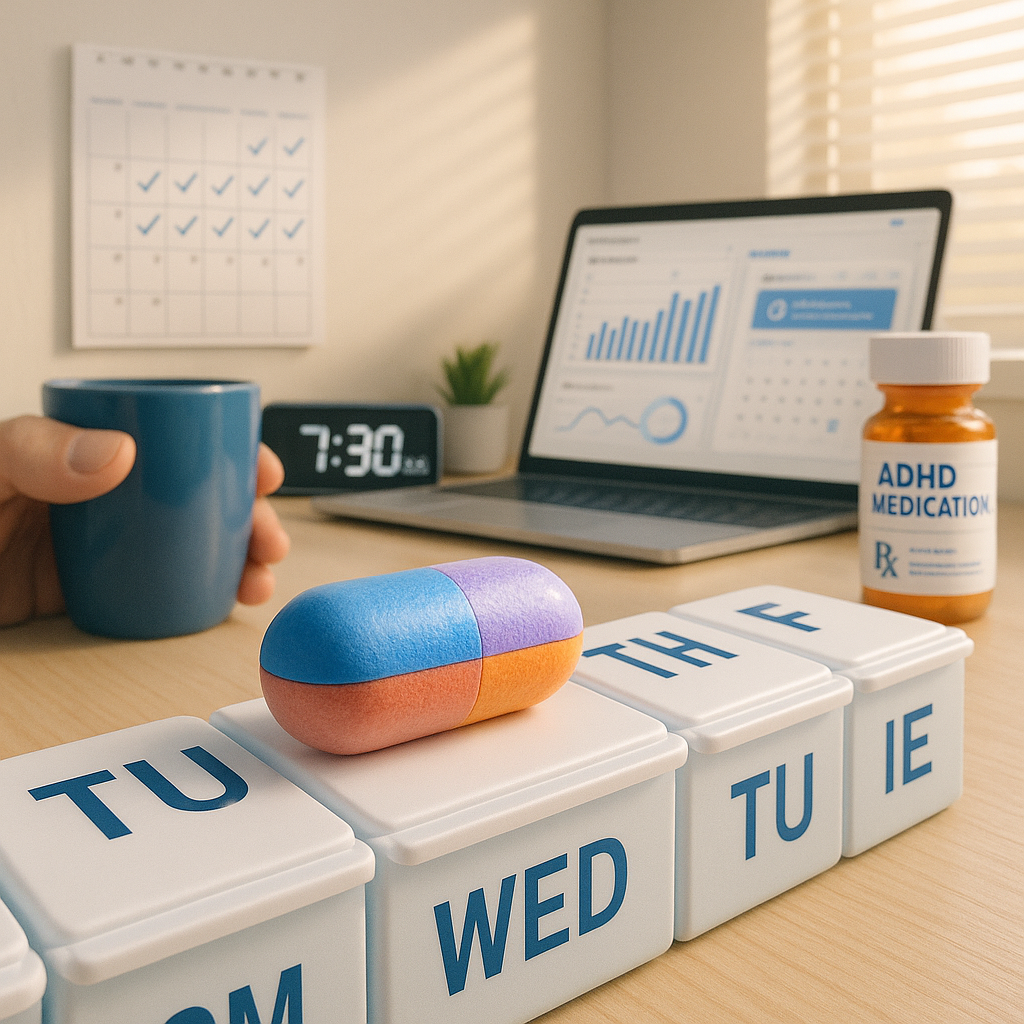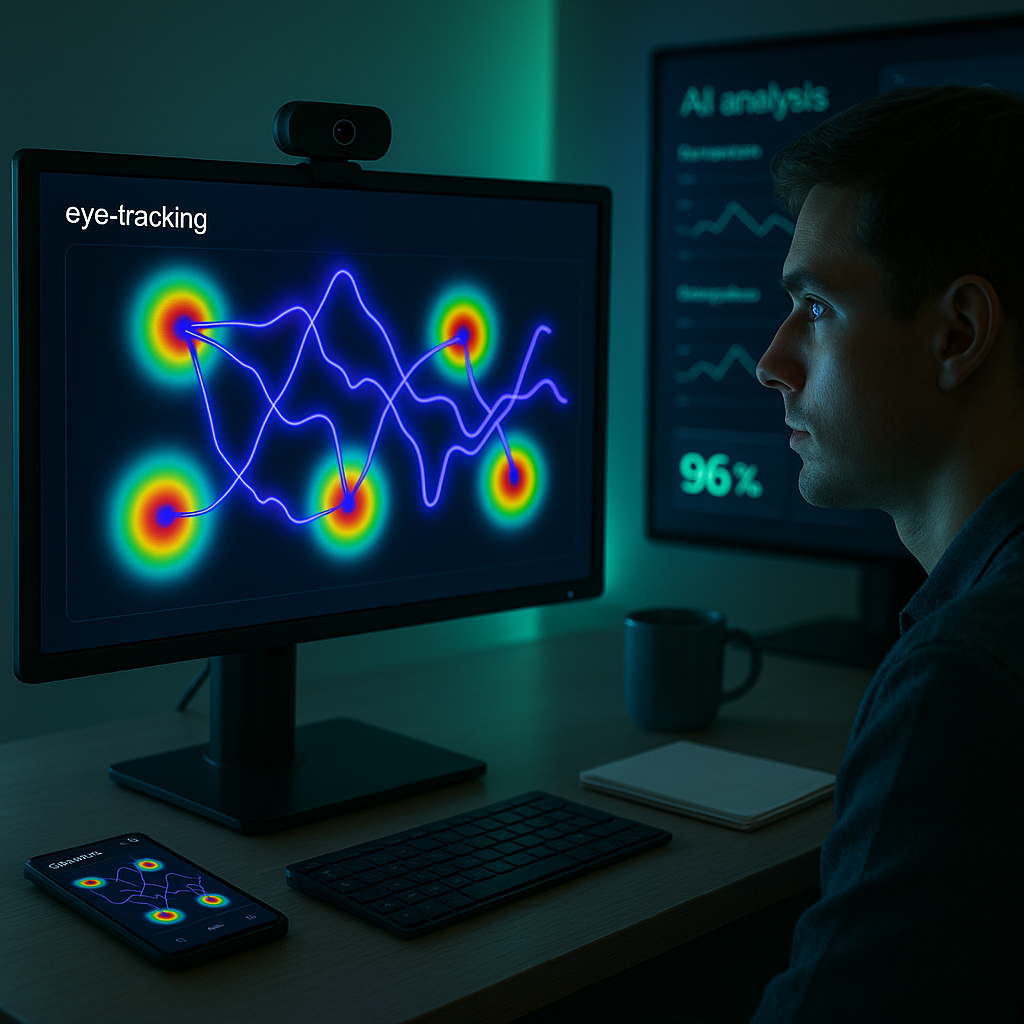Key Takeaways
- Visual hierarchy does the heavy lifting: Well-designed interfaces and clear visual organization are as essential as AI features, enabling ADHD users to navigate tasks without cognitive overload.
- AI learns and adapts to your brain, not just your tasks: Advanced AI task managers go beyond simple reminders. They analyze patterns, tailor workflows, and offer personalized suggestions to address challenges like time blindness, prioritization, and executive function hurdles.
- Dopamine-friendly designs boost engagement: Tools with motivational features, habit streaks, and supportive nudges help maintain attention and make task completion more rewarding for ADHD brains.
- Customization options empower neurodivergent strengths: The best apps let users tweak layouts, alerts, and priority settings. This flexibility supports a range of ADHD challenges, from hyperfocus to forgetfulness.
- Integrations build holistic support systems: Seamless syncing with calendars, emails, project tools, and health trackers reduces information silos and provides a wider safety net for daily routines (including medication reminders and habit tracking).
- Affordability isn’t a tradeoff for quality: Free and budget-friendly options now offer robust AI features and accessible user interfaces. Effective support doesn’t need to break the bank.
- All-in-one or single-focus? Match tools to your real needs: While comprehensive platforms centralize workflows, focused apps often provide a less overwhelming experience. Select tools based on your comfort, workflow, and daily realities, not solely on feature lists.
Choosing an ADHD-friendly AI task manager is a deeply personal process. It’s not just about collecting every possible feature, but about finding a tool that adapts to your unique rhythms and cognitive patterns. Understanding the key features and major platforms is the first step. Next, let’s explore the top contenders and what sets them apart as genuine allies in neurodivergent productivity.
Introduction
Facing a cluttered to-do list can feel like trying to navigate a malfunctioning operating system. Especially for individuals managing ADHD, traditional task lists and workflow apps too often become sources of stress rather than relief. However, a new generation of AI-powered task managers is changing the game, offering intuitive systems that adapt to the way neurodivergent minds work best.
By harnessing cutting-edge AI, these tools go well beyond scheduling reminders. They blend visual clarity, motivational cues, and personalized workflows designed to support both executive function challenges and creative bursts. For ADHD professionals, solopreneurs, and creatives, the best productivity app is the one that understands their unique strengths, smooths out pain points like time blindness or decision fatigue, and offers sustainable support without unreasonable costs.
In this guide, we’ll break down what makes AI-powered ADHD task managers effective. We’ll examine the features that matter most and match popular solutions to real-world needs across different neurodivergent profiles.
Key Features to Look for in ADHD-Friendly AI Task Managers
Visual Organization and Interface Design
Effective visual hierarchy is at the heart of ADHD-friendly design. Color-coding is a fundamental navigation aid, helping users instantly distinguish between types and priorities of tasks. For example, TickTick and Todoist excel at offering customizable color schemes, so you can assign a visual logic that matches your workflow.
Task managers should offer flexible view options, such as list, board, and calendar formats. Monday.com is a strong example, enabling users to toggle between multiple layouts based on how their executive functions are operating at any given moment. This flexibility prevents visual clutter and cognitive overload while still keeping all critical information readily accessible.
Progress tracking is another crucial element. Apps like Amazing Marvin use visual momentum bars and celebratory animations to make task completion more engaging through rewarding feedback loops. These small dopamine boosts can motivate users to stay on track and build new habits.
AI-Powered Task Analysis and Prioritization
Modern AI tools take much of the tedious decision-making out of your hands. For instance, Motion’s AI engine evaluates your work habits and automatically schedules tasks during your optimal productivity windows.
Key AI features include:
- Smart sorting based on deadlines, complexity, and your typical energy levels.
- Automated priority settings that align with project urgency and personal goals.
- Context-aware grouping, which bundles similar tasks together for deeper focus periods.
Reclaim.ai stands apart by using historical user data to accurately predict how long tasks will take. This is invaluable for decreasing time blindness and keeping schedules realistic, especially in fast-paced professional settings.
Automated Task Breaking and Sequencing
Complex projects become manageable when AI can break them down into actionable steps. Intelligent task decomposition is more than just splitting a checklist. It’s about creating workflows that adapt to your natural way of thinking.
Sunsama’s AI excels at:
- Recommending project breakdowns based on goals and complexity.
- Revealing tasks progressively to reduce overwhelm and maintain focus.
- Dynamically reorganizing task sequences as your workflow evolves.
Outside the productivity and tech sector, this approach is equally beneficial. In healthcare, for instance, AI-assisted tools can help professionals break down multi-step treatment protocols. In education, teachers can sequence lesson planning into manageable increments to support students with ADHD.
Integration Capabilities and Ecosystem Support
Integration with existing tools multiplies the impact of AI-driven task management. Essential capabilities include:
- Syncing calendars across platforms (Google, Outlook, Apple)
- Automatic task creation from emails and messages
- Compatibility with project management tools (Slack, Asana, Trello)
- Voice command integration for hands-free updates
ClickUp is a prime example, offering connections to more than 1,000 apps. This interconnected approach supports holistic management of personal, professional, and health routines, creating a unified safety net.
Integration is also transforming other industries. In finance, for example, task apps connect with accounting and invoicing tools to streamline compliance. In legal and healthcare environments, integrations help ensure deadlines, appointments, and documentation never fall through the cracks.
Top AI Task Managers for Different ADHD Needs
Best for Visual Thinkers
Taskade AI particularly appeals to visual processors. With its mind-mapping tools and intuitive interface, users can shift seamlessly from idea generation to task execution.
Highlights include:
- Immediate conversion of mind maps to actionable task lists
- Mapping relationships to organize priorities
- AI-driven groupings that visually reflect thought patterns
Pricing: Free tier available. Premium plans begin at $9.99/month.
Best for Time Blindness
Motion stands out for users who struggle with time awareness:
- AI-powered calendar blocking avoids unintentional over-scheduling
- Dynamic schedule adjustments if tasks run longer than expected
- Smart duration forecasts grounded in your past activity
Pricing: Individual plans start at $19/month.
Best for Executive Function Support
Amazing Marvin is designed for deep executive function support:
- Access to a marketplace of ADHD-specific strategies
- Highly customizable routines with AI suggestions
- Features like “progressive reveal” to limit overwhelm until you’re ready
Pricing: $12/month with annual subscription.
Additional Industry Examples
Beyond general and business use, these features shine in diverse environments:
- Healthcare: Taskade’s visual mapping aids care teams in organizing patient plans and follow-ups.
- Education: Amazing Marvin’s customizable routines help teachers scaffold student assignments to match varying attention spans.
- Finance: Motion’s smart calendar assists professionals in pacing workload during peak reporting seasons.
Pricing Considerations and Value Assessment
Free vs. Paid Options
Many task managers offer robust free versions, but certain premium features provide game-changing value for ADHD management.
Free Tools:
- Microsoft To Do: Basic AI-driven checklists suitable for simple routines.
- TickTick: Offers limited automation and clear visual frameworks.
- Todoist: Capable of basic task management and light AI features.
Premium Upgrades:
- Sophisticated AI prioritization algorithms
- Advanced automation for repetitive workflows
- Granular visual customization and organization
- Priority customer support for troubleshooting and onboarding
These upgrades are particularly valuable in sectors such as legal or healthcare, where high stakes and strict deadlines demand reliable, customizable task management.
Subscription Models and Pricing Strategies
Most platforms feature tiered subscription options.
Entry-Level Plans ($5-15/month):
- Suitable for individuals seeking foundational AI features and integrations
Professional Plans ($15-30/month):
- Unlock advanced AI, deeper automations, premium integrations, and tailored support.
Testing a free trial of these advanced tiers is a smart way to gauge real-world impact on ADHD management before making an investment.
Implementation and Adaptation Strategies
Getting Started Without Overwhelm
A phased roll-out can turn daunting new systems into sustainable routines.
- Start with basic task entry and organization signals for the first week.
- Incorporate AI suggestions and automation in week two.
- Customize layouts, notifications, and routines by week three.
- Connect integrations (calendars, email, health trackers) in the fourth week to unify workflows.
Tailoring Systems to Your ADHD Profile
Recognizing your unique neurodivergent patterns is essential. For example:
Primarily Inattentive ADHD:
- Set up frequent automated reminders
- Stick with streamlined interfaces and strong visual cues
- Build rigid boundaries for task switching
Primarily Hyperactive/Impulsive ADHD:
- Integrate movement breaks and variable feedback
- Use dynamic, rapid-response visual tools
- Enable instant capture of ideas and thoughts
Customizing your tools for these nuances isn’t just about preference; it builds confidence and reinforces sustainable productivity.
In other industries, such as education, teachers can create classroom systems that mirror these strategies. They might use notification schedules and color cues to support students with diverse attention patterns. In healthcare, phased onboarding supports smoother adoption among both staff and patients, promoting consistency with medication or therapy plans.
Conclusion
Selecting the right AI task manager is more than just a tool choice. It can be the catalyst that transforms a chaotic, scattered day into a series of small wins and creative breakthroughs. When platforms prioritize visual clarity, flexible organization, and AI-powered support, they shift the narrative from “fighting against your brain” to amplifying its innate strengths.
The most impactful solutions are those thoughtfully customized for your operating style, seamlessly connecting with the tools and routines you already use. Integration, automation, and customization are no longer premium luxuries; they are must-haves for neurodivergent professionals determined to achieve meaningful, sustainable productivity.
Looking forward, the next wave of AI task management will empower individuals to move beyond simple adaptation and toward true anticipation. These tools will help you stay ahead of shifting demands in business, healthcare, education, and beyond. For ADHD and neurodivergent minds, the question is not whether you’ll embrace these advancements, but how you’ll leverage them to turn your unique spark into lasting impact. With the right systems, neurodivergence becomes not only manageable but a foundation for creativity, innovation, and growth.





Leave a Reply